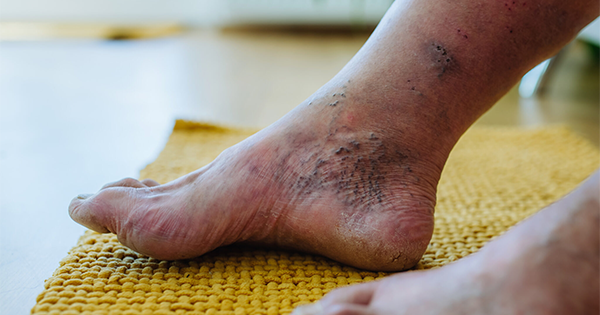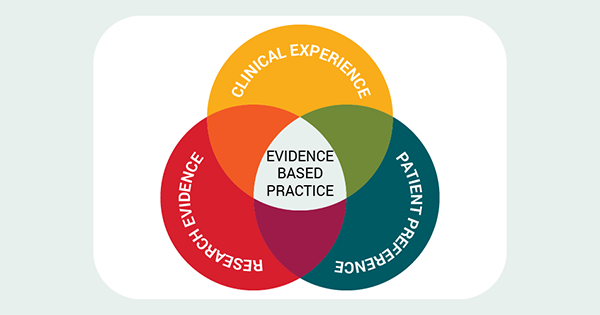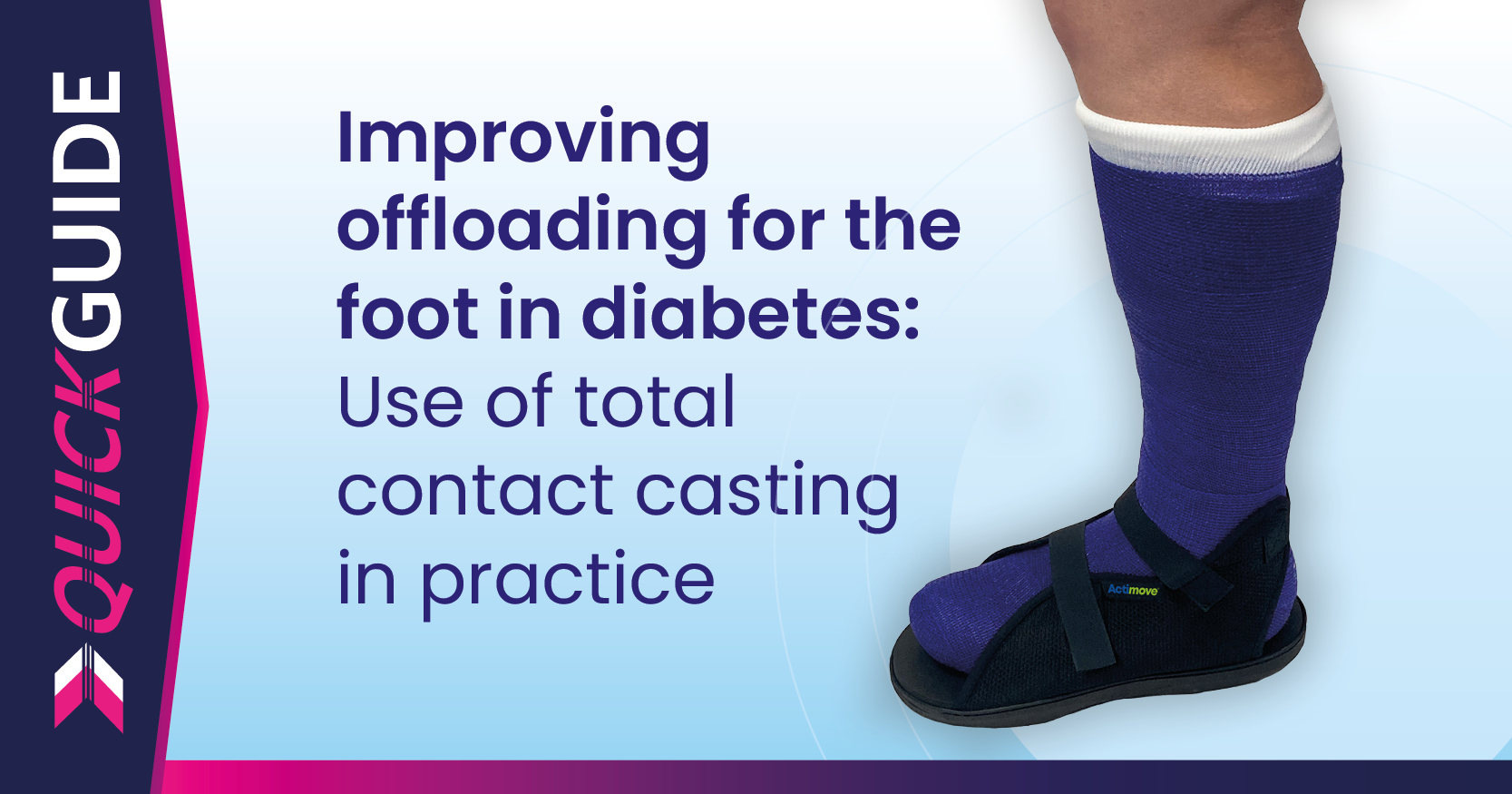One of the many severe complications of diabetes mellitus is diabetic foot disease (Schaper et al, 2020; Collings et al, 2022). Diabetic foot ulcers and Charcot neuroarthropathy are two of the main manifestations of diabetic foot disease. Of the estimated five million adults in the UK with diabetes mellitus, between 1% to 2% have a diabetic foot ulcer at any time (Abbott et al, 2002; Chamberlain et al, 2022).
Every year, nearly 7,000 lower limbs are amputated in the UK due to diabetic foot complications (Hingorani, LaMuraglia and Henke, 2016). In 80% of cases, diabetic foot ulceration (DFU) precedes diabetes-related lower limb amputation (Chamberlain et al, 2022). The five-year mortality rate in patients with diabetes who develop a foot ulcer is 50%; this exceeds many common cancers (Armstrong et al, 2020).
The Global Burden of Disease study ranked diabetes related foot disease complications tenth on a scale of leading causes of global years lived with disability in 2015 (Lazzarini, Pacella, Armstrong and van Netten, 2018). The NHS in England projected that the management of diabetic foot disease and associated lower limb amputation would directly cost the NHS between £972 million and £1.13 billion in 2014–2015 (Kerr, Barron, Chadwick et al, 2019). Along with poor health outcomes and high costs to society, people with diabetic foot complications have a significantly reduced quality of life and the impact on psychosocial and physical health for the individual and wider community are also considerable (Goodridge, Trepman and Embil, 2005; Khunkaew, Fernandez and Sim, 2019). Clearly diabetic foot disease is an important area and considerable improvements in healthcare are required to improve patient outcomes and reduce the burden of diabetic foot disease on society.
Vascular Society Diabetic Foot Specialist Interest Group
In October 2019, the Vascular Society of Great Britain and Ireland (VSGBI) formed the Vascular Society Diabetic Foot Specialist Interest Group (VSDFSIG) with the intention of improving health outcomes and reducing the burden of diabetic foot illness. The VSDFSIG is a diverse team of clinical specialists as well as patients and/or their carers, with the goal of advancing research activity in preventing and managing diabetic foot disease. The VSDFSIG represents all members of the multidisciplinary team, including vascular surgeons and trainees; diabetes physicians; podiatrists; podiatric surgeons; orthopaedic foot and ankle surgeons; vascular nurse specialists; and trial methodologists, all with experience in delivering diabetic foot research. This team’s primary purpose is to develop impactful research activity in this area. One of the initial purposes of the VSDFSIG was to perform a research priority setting exercise to determine where best to focus national research efforts over the next five years.
Historically, research proposals have mostly originated from either researchers or healthcare professionals. There has been no effective means for people who have personal experience of diseases to have their voices heard regarding issues that are significant to them. Utilisation of the James Lind Alliance (JLA) Priority Setting Partnership (PSP) methodology is one strategy for ensuring that all voices are heard and are considered equal. This methodology brings patients, their carers and healthcare professionals together to identify and prioritise ‘evidence uncertainties’ in specific conditions or areas of healthcare (James Lind Alliance, 2021).
PSP is a technique that aims to empower patients and carers to the same degree that it empowers medical professionals throughout the entirety of the procedure. For the VSDFSIG, the process involved identifying the most important clinical research priorities in the field of diabetic foot disease and ranking them in order of importance so that those involved in diabetic foot clinical research can better target future research aims, helping to ensure research is of relevance to patients, clinicians, researchers, funders of research and policymakers.
Research priority setting
Between August 2019 and January 2021, a modified version of the JLA PSP methodology was undertaken, combining a previously undertaken Delphi consensus of professional-led research priority setting for diabetic foot disease prevention and management (Smith et al, 2020) with a patient/carer-led research prioritisation. This initially included a survey, which was promoted to all healthcare professionals and patients and carers who had been affected by diabetic foot disease. This survey was available electronically and in paper copy and was promoted in a wide variety of ways in multiple settings, for example, social media, affiliated organisation group newsletters, posters in clinical areas and websites.
In the first round of the Delphi prioritisation process, there were responses from 481 healthcare professionals who suggested 1,231 research priorities and 373 patients or carers who suggested 582 research priorities. Following this, the questions were screened and duplicates removed; similar responses were amalgamated and summarised, which resulted in the identification of six research areas from the clinician group and seven from the patient/carer group. Then a second round of prioritisation took place, where participants were asked to rate the importance of each individual question using a Likert scale (scores ranged from ‘not at all important’ to ‘extremely important’). After this ranking was completed, the research priorities of the patients and carers were combined with the priorities of the health professionals, which resulted in a total of 12 research priority issues [Figure 1].
The 12 research priority issues were then ranked in terms of priority through a process of discussion and consensus at a final workshop in June 2021, attended by both patients and caregivers as well as professionals working in healthcare (see Table 1for the results).
Programmes of research
The VSDFSIG performed a mapping exercise to identify past, current and planned research against each research priority to identify gaps in research. This was followed up by a ‘sandpit’ event in November 2021, to kickstart the process of generating research questions or programmes of research to address the research priorities in areas without existing research activity. This online meeting again included clinicians, researchers and those with lived experience of diabetic foot problems. The emerging points from these discussions included the role of podiatry in prevention of DFU; risk assessment and the annual foot review; improving referrals into the diabetic foot MDT; reduction of further amputation following a minor amputation. Further detail of these discussions has been published elsewhere (Collings et al, 2022). It is clear that there are overlaps and interdependencies among themes.
Implicationsforresearch
Prior research in diabetic foot disease has largely concentrated on the treatment of existing ulcers, including interventions to improve ulcer healing, and diagnosis and treatment of infection. The research prioritisation process has established that patients and carers are much more interested in strategies to prevent diabetic foot ulceration and recurrence, including strategies for screening, education and early access to services when ulcers do occur, than concentrating efforts on improving healing of ulcers when they do occur, with seven of the top ten priorities focused on primary or secondary prevention.
Establishing the top 12 clinical research priorities will help inform the future strategy of researchers contributing to the evidence base for the treatment and management of diabetic foot disease (Collings et al, 2022), guiding researchers and funders towards research questions that will be of most benefit to both healthcare professionals and patients. Furthermore, the themes and key ideas that were distilled during the subsequent sandpit event are available to the diabetic foot research community as key elements to take forward into the future.
The VSDFSIG is committed to advancing diabetic foot research in the UK and is keen to support aspiring researchers in the field to develop research competencies and clinical research activity. The group has recently been successful in a NIHR HTA Research Platform Acceleration award (NIHR, 2023) to further develop a national diabetic foot research network to deliver trials on research priorities, and a platform into which future trials can be embedded. It is clear that development of research interest and expertise amongst podiatrists working within the MDT is key to successful delivery of current and future multicentre national trials. NIHR CRN and local NHS trust support to help develop this is a crucial component of delivery of the research priorities.
The role of podiatry within research
It is acknowledged that the podiatry profession continues to evolve with evidence that informs practice and extending roles (Harrison-Blount, Nester and Williams, 2019), which provides practitioners with the opportunity to take ownership and drive change forward. The research priority setting process identified a number of themes in relation to the role of the podiatrist in the prevention of DFU formation. A number of key points were discussed, including questions related to the role of foot health professionals versus podiatry specialists, NHS versus private sector care, community versus hospital-based podiatry, the levels of clinical expertise required, and further evidence needed to clarify the role of podiatry in intact feet. It is quite clear that the vision for the NHS is that research is everyone’s business and that all NHS staff should be empowered and supported to participate in clinical research as part of their job (Iacobucci, 2021). Podiatry is at the heart of many of the research priorities identified, so it is logical that wherever possible, podiatrists should be leading, developing and participating in research. The VSDFSIG would welcome contact from anyone seeking support with research in diabetic foot disease.
Summary
Diabetic foot disease represents a huge burden to patients, healthcare providers and society. The JLA PSP collaboration between researchers, clinicians and patients has identified the top 12 research priorities in diabetic foot disease. The top 12 priorities will guide future research proposals and ensure research address the key areas in diabetic foot disease. The VSDFSIG is a multidisciplinary group leading the development of a diabetic foot disease research portfolio and welcomes those with an interest in diabetic foot disease research to become involved.
Acknowledgements
We would like to acknowledge the members of the VSDFSIG who have contributed to the development and delivery of the research priority setting process: Prof Frank Bowling; Mr Jonathan Cohen; Dr Richard Collings; Mr Andy Cowan (Diabetes UK); Prof Fran Game; Dr Catherine Gooday; Prof Venu Kavarthapu; Mr Sandip Nandhra; Prof Jane Nixon; Miss Nung Rudarakanchana; Mr Joseph Shalhoub.
We would also like to acknowledge those clinicians who contributed to the sandpit event: Dr Carol Amery; Mr Patrick Chong; Miss Anna Murray; Mr Craig Nesbitt; Mr Sandip Sarkar; Miss Kaji Sritharan.





